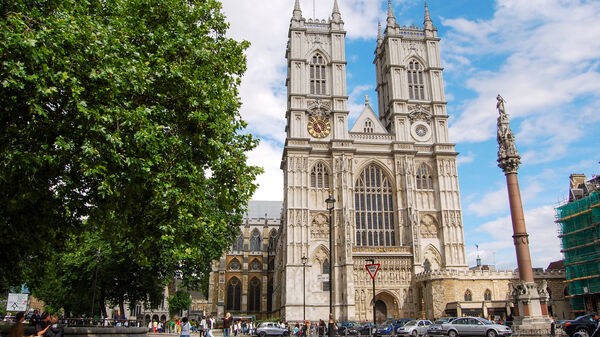Inside Westminster Abbey, the Religious Heart of England
By Rick StevesWearing a red robe and a warm smile, Eddie works as a verger at London's Westminster Abbey. As a church official, he keeps order in this sacred space. Today his responsibility is to sort out believers (who get in free to pray), tourists (who pay the $30 entrance fee), and those who fold their hands and reverently say, "I'd like a few moments with the Unknown Soldier, please," in order to avoid paying $30.
I tell him I'm working on a Rick Steves guidebook, and he says, "I'd like a word with that Rick Steves. He implies in his guidebook you can pop in to worship or pay respects to the Unknown Soldier in order to get a free visit to the abbey."
"Well, I am Rick Steves," I tell him, and we sort it out. I'm really charmed by Eddie, and together we agree on a new tactic: Rather than promote free entry for visitors who claim to be worshippers, I'll encourage tourists to experience the church the way it was designed to be experienced. I'll list the daily schedule of worship services for those who'd like to get in without paying $30. (For example, there is a musical evensong service — a glorious experience — several days a week when everyone is welcome for free.)
Then Eddie takes me into a place where no tourist goes — the Jerusalem Chamber, where scholars met to oversee the translation of the Bible from ancient Greek and Hebrew into English, creating the King James Version.
Knowing the difficulty of translating the word of God into the people's language and the importance of these heroic steps in the 16th and 17th centuries, I get the same goose bumps I felt when I was in Germany's Wartburg Castle and saw the room where Martin Luther did his translation for the German-speaking world.
Eddie deposits me in the abbey and I begin my visit like any other tourist. Here is where every English coronation since 1066 has taken place. At a coronation, the Archbishop of Canterbury stands at the high altar. The coronation chair is placed before the altar on the round, brown pavement stone representing the earth. After a church service, the new king or queen sits in the chair, is anointed with holy oil, and then receives a ceremonial sword, ring, and cup. The royal scepter is placed in the new ruler's hands, and — dut-dutta-dah — the archbishop lowers the Crown of St. Edward the Confessor onto the royal head.
As I walk, I listen to the audio tour narrated by Jeremy Irons. The abbey's steep admission price includes a marvelous, one-hour guided tour with the best-designed audiowand I've encountered anywhere in Europe. Taking full advantage of this self-guided tour, the abbey is well worth the entrance fee.
With Irons' soothing voice in my ear, I enjoy some private time with these remarkable artifacts: the marble effigy of Queen Elizabeth I made from her death mask in 1603 and considered the most realistic likeness, the graves of literary greats of England gathered — as if during a posthumous storytelling session — around the tomb of Geoffrey Chaucer (Mr. "Canterbury Tales"), poppies lining the tomb of Britain's Unknown Soldier with the US Medal of Honor (presented by General John J. Pershing in 1921) hanging from a neighboring column, the statue of Martin Luther King Jr. added as an honorary member of this now heavenly English host, and so much more.
My favorite window features saints in robes and halos mingling with pilots in parachutes and bomber jackets. It's in the Royal Air Force Chapel, a tribute to WWII flyers who earned their angel wings in the Battle of Britain (July–October 1940). Hitler's air force seemed to rule the skies in the early days of the war, bombing at will and threatening to snuff Britain out. While determined Londoners hunkered down, British pilots in their Spitfires and Hurricanes took advantage of newly invented radar systems to get the jump on the more powerful Luftwaffe. These were the fighters about whom Churchill said, "Never...was so much owed by so many to so few." The book of remembrances lists each of the 1,497 pilots and crew members who died in the Battle of Britain.
Grabbing a pew to ponder this grand space, I look down the long and narrow center aisle of the church. Lined with the praying hands of the Gothic arches, glowing with colored light from the windows, it's clear that this is more than a museum. With saints in stained glass, heroes in carved stone, and the bodies of England's greatest citizens under the floor, Westminster Abbey is the religious heart of England.


